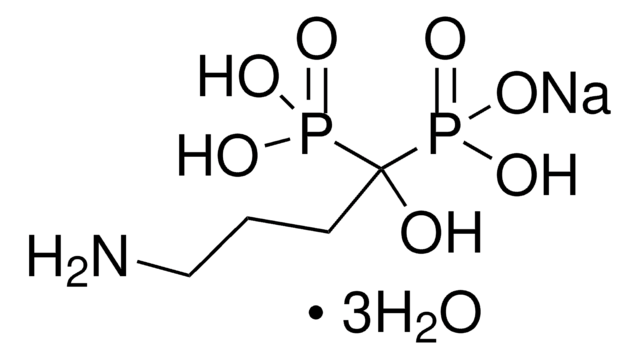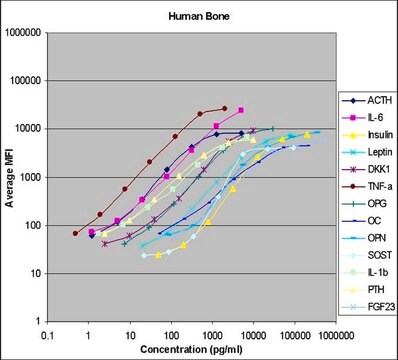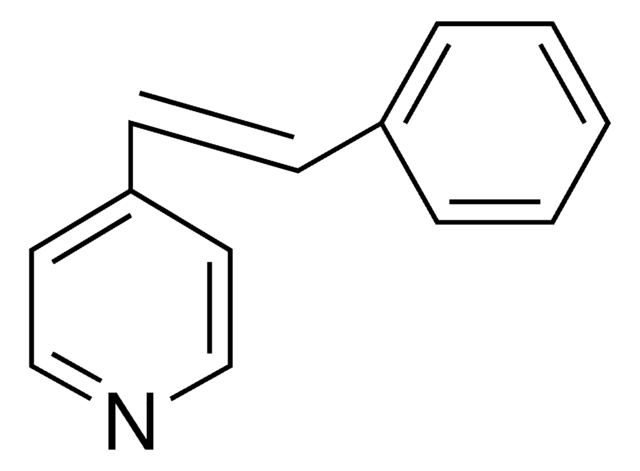SRP3132
Osteoprotegerin (OPG) human
recombinant, expressed in E. coli, ≥98% (SDS-PAGE), ≥98% (HPLC), suitable for cell culture
Synonym(s):
OCIF (osteoclastogenesis inhibitory factor), OPG, TNFRSF11B, TR1
Sign Into View Organizational & Contract Pricing
Select a Size
All Photos(1)
Select a Size
Change View
About This Item
UNSPSC Code:
12352202
NACRES:
NA.32
Recommended Products
biological source
human
recombinant
expressed in E. coli
assay
≥98% (HPLC)
≥98% (SDS-PAGE)
form
lyophilized
mol wt
20.0 kDa
packaging
pkg of 50 μg
technique(s)
cell culture | mammalian: suitable
impurities
<0.1 EU/μg endotoxin, tested
color
white to off-white
UniProt accession no.
General description
Osteoprotegerin (OPG) is a member of the TNFR (tumor necrosis factor receptor) superfamily that can act as a decoy receptor for RANKL (receptor activator of nuclear factor κ-B ligand). The gene is mapped to human chromosome 8q24. The primary structure of OPG protein consists of seven distinct domains, four of which corresponds to the extracellular cysteine-rich domains of TNFR proteins and constitutes the soluble OPG. OPG is expressed in a wide variety of tissues including adult heart, lung, kidney, liver, spleen, prostate, lymph node and bone marrow. It is secreted both as a monomeric and a dimeric protein. Recombinant human OPG is a soluble 20kDa protein containing 174 amino acid residues.
Application
Osteoprotegerin (OPG) human has been used as a supplement in human cell culture during cytokine production.
Biochem/physiol Actions
Binding of soluble osteoprotegerin (OPG) to sRANKL (soluble receptor activator of nuclear factor κ-B ligand) inhibits osteoclastogenesis by interrupting the signaling between stromal cells and osteoclastic progenitor cells, thereby leading to excess accumulation of bone and cartilage. Changes in the level of serum OPG are associated with atherosclerosis and cardiovascular disorders. It might also be associated with malignancy and plays a regulatory role in multiple myeloma, prostate, breast, bladder and gastric carcinoma.
Sequence
METFPPKYLH YDEETSHQLL CDKCPPGTYL KQHCTAKWKT VCAPCPDHYY TDSWHTSDEC LYCSPVCKEL QYVKQECNRT HNRVCECKEG RYLEIEFCLK HRSCPPGFGV VQAGTPERNT VCKRCPDGFF SNETSSKAPC RKHTNCSVFG LLLTQKGNAT HDNICSGNSE STQK
Physical form
Lyophilized from 10 mM Tris pH, 7.5 + 75 mM NaCl.
Reconstitution
Centrifuge the vial prior to opening. Reconstitute in 5 mM Tris, pH 7.5 to a concentration of 0.1-1.0 mg/ml. Do not vortex. This solution can be stored at 2-8°C for up to 1 week. For extended storage, it is recommended to further dilute in a buffer containing a carrier protein (example 0.1% BSA) and store in working aliquots at -20°C to -80°C.
Storage Class
11 - Combustible Solids
wgk_germany
WGK 3
flash_point_f
Not applicable
flash_point_c
Not applicable
Choose from one of the most recent versions:
Certificates of Analysis (COA)
Lot/Batch Number
Don't see the Right Version?
If you require a particular version, you can look up a specific certificate by the Lot or Batch number.
Already Own This Product?
Find documentation for the products that you have recently purchased in the Document Library.
Polymorphisms in three genes are associated with hemorrhagic stroke.
Brain and Behavior, 5, e00395-e00395 (2015)
Functions of RANKL/RANK/OPG in bone modeling and remodeling.
Boyce BF and Xing L
Archives of Biochemistry and Biophysics, 473, 139-146 (2008)
Osteoprotegerin secreted by inflammatory and invasive breast cancer cells induces aneuploidy, cell proliferation and angiogenesis.
Goswami S and Sharma-Walia N
BMC Cancer, 15, 935-935 (2015)
The tumor necrosis factor superfamily member RANKL suppresses effector cytokine production in group 3 innate lymphoid cells
Bando JK, et al.
Immunity, 48(6), 1208-1219 (2018)
W S Simonet et al.
Cell, 89(2), 309-319 (1997-04-18)
A novel secreted glycoprotein that regulates bone resorption has been identified. The protein, termed Osteoprotegerin (OPG), is a novel member of the TNF receptor superfamily. In vivo, hepatic expression of OPG in transgenic mice results in a profound yet nonlethal
Our team of scientists has experience in all areas of research including Life Science, Material Science, Chemical Synthesis, Chromatography, Analytical and many others.
Contact Technical Service







